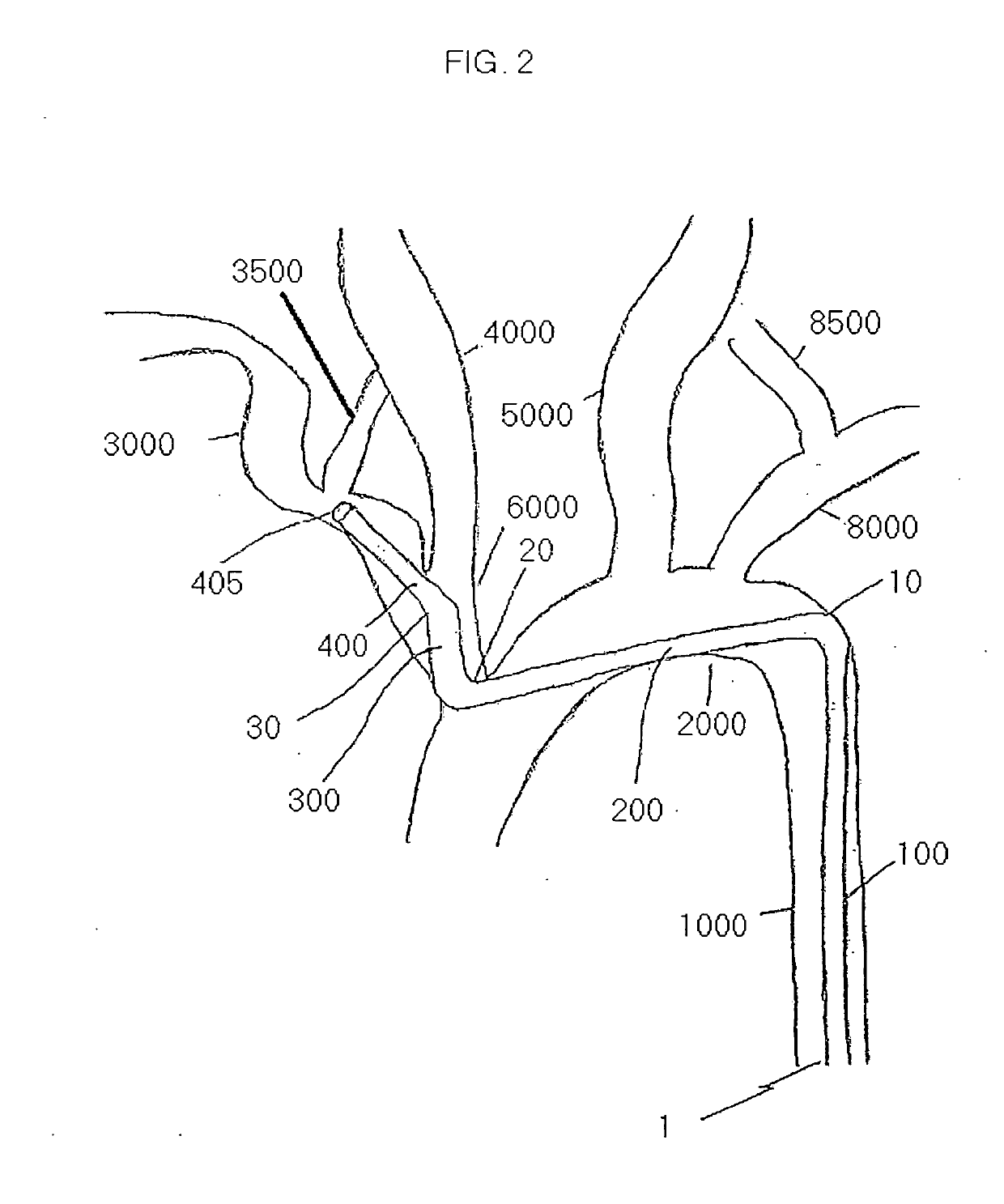However, to insert a
catheter into a narrow and complex
cerebral vessel, surgeon's highly developed technique is required.
Due to the tortuous
anatomy and the three-dimensional arch structures, obtaining appropriate access in many procedures using existing techniques requires a steep
learning curve and extensive monitoring may result in adverse
radiation exposure for the patient.
The
small branch perforations can be deadly, due to the rapid development of retropharyngeal bleeding and
airway compromise, particularly with an anti-coagulated patient.
Another complication associated with the remote
guide catheter access method is
guide catheter prolapse, which can result in many difficulties, including but not limited to carotid filter getting entanglement in the
stent and detaching or embolizing.
Additionally, access to the carotid and vertebral arteries, as well as occasional each other vessels, can sometimes be impossible to achieve in routine transfemoral fashion in certain anatomical situations.
This is especially difficult with type III
aortic arches, as well as bovine arches.
However, in many anatomical situations, access to some vessels can be difficult.
If the
catheter does not have adequate physical support to
resist such
recoil and displacement, it will fall out of the desired position.
In some cases, this could prevent appropriate access to the desired
pathological region altogether.
In other cases, it can create complications during a procedure when catheters and devices suddenly
recoil and displacement and are dislodged from the desired location.
Such movement is undesirable.
However, there is a general reluctance to puncture the right
brachial artery due to the need to navigate through the innominate
artery and arch and due to the risk for complications such as direct nerve trauma and ischemic
occlusion resulting in long-term disability (Alvarez-Tostado J. A. et al.
Distal thrombectomy is a technically difficult procedure (Singh P. et al.
Despite good clinical outcome, limitations of this device include operator
learning curve, the need to
traverse the occluded
artery to deploy the device distal to the
occlusion, the duration required to perform multiple passes with device, clot fragmentation and passage of an
embolus within the bloodstream (Meyers P. M. et al.
These stents are not ideal for treating intracranial
disease due to their rigidity which makes navigation in the convoluted intracranial vessels difficult (Singh P. et al.
These include the requirement for double anti-
platelet medication, which potentially adds to the risk of hemorrhagic complications and the risk of in-
stent thrombosis or
stenosis.
Despite the potential to diminish
procedure time and to improve recanalization rates, drawbacks to using these devices remain.
Although mechanical endovascular neurointerventions using a transfemoral approach are the current standard for the treatment of
acute stroke, it is difficult to access the right
internal carotid artery and right vertebral
artery via these transfemoral techniques when certain
aortic arch variation occurs.
A similar transfemoral access problem can occur when vertebral arteries arise at an
acute angle from the subclavian artery, or in some variations of the left internal carotid or other vessels.
Although results have improved, repair of this
abnormality is associated with a significant mortality and morbidity (Tchervenkov C. I. et al.
For example, the
acute angle at which the left
common carotid artery branches from the
aortic arch in the bovine arch configuration makes mechanical endovascular neurointervention difficult, especially when additional
tortuosity (i.e., twists) in the
aorta and / or the carotid artery are present.
However, when a wire is advanced through these catheters in order to achieve distal access to the artery head, these catheters lack adequate support which results in recoil and displacement into the aortic arch of the advancing wire.
The lack of adequate support and the resulting recoil and displacement of the advancing wire make
effective treatment impossible.
Even when catheterization is achieved in these situations, the process of arriving at the correct combination of catheters and wires results in long treatment delays.
Additionally, with aging the
anatomy of the
takeoff of the
great vessels often changes, which can make access to the cerebral vasculature more difficult.
This is particularly problematic as with aging the incidence of major thromboembolic strokes, for which emergent endovascular thrombectomy is often the best treatment, also increases The branching pattern of the brachiocephalic
branch from the aortic arch was categorized into three types based on the
vertical distance from the origin of the brachiocephalic
branch to the top of the arch, which determined the arch type.
Similar difficulties can be encountered when trying to access a contralateral vertebral artery or carotid artery from a radial, brachial, or axillary approach.
In particular, the prior art discloses bending catheters by the
insertion of a wire or
braid inside a catheter then bending said wire or
braid which results in a passive bend in the catheter.
 Login to View More
Login to View More  Login to View More
Login to View More 


